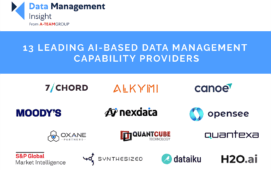Tom Secunda, founding partner and global head of financial products and services at Bloomberg, cantered through a brief history of technology and made a foray into the future at last week’s Bloomberg Enterprise Technology Summit in London before delivering the Bloomberg message that the world has changed but is providing opportunities that were unimaginable two years’ ago.
Secunda started his brief history of technology at a point before he joined the industry describing the highly proprietary nature of IBM A-frame batch-processing computers that only the largest financial firms such as Merrill Lynch and Goldman Sachs could afford. Moving swiftly on, Secunda noted the arrival of minicomputers – and the founding of Bloomberg – in the early 1980s. Still proprietary, but much more affordable, minicomputers made their way into financial services and the special purpose Quotron minicomputer offered stock quotes on dumb terminals. The next revolution identified by Secunda was Unix, allowing computer users to buy application packages and run them on equipment businesses could afford. The result was more people running software on local servers, a phenomenon that would be amplified by the arrival of the personal computer.
“At the time of the PC revolution, most people didn’t believe the internet would provide a good distribution method, but the biggest innovations we have seen have been the network and the internet. These allow you to decide where to place things,” said Secunda. Noting the company’s initial and ongoing commitment to a distributed environment, he described the ability to place applications in different places, perhaps on a desktop or in collocation at an exchange, or outsource them to hosting companies such as Bloomberg. He also spoke of the different types of applications that are emerging as, for example, desktop applications are repurposed for mobile devices.
Reflecting on today’s challenges, Secunda said: “Data is getting bigger and quicker, and people are more wary about costs than ever before. Technology and the needs of the market have come back together and market participants can use software that is distributed through the cloud to be faster and more effective.” In terms of its own solutions, Secunda said Bloomberg would press on with the development of its Enterprise Products and Solutions business over the next two years, offering its open application programming interface to allow customers to use its data and developing solutions that others can use.
Asked by a member of the summit audience if Bloomberg has become too big to be innovative, Secunda replied: “Bloomberg tries to be a host environment for lots of small innovative efforts.” And questioned on the company’s approach to social media, he responded: “We already have a social media community and it wants to distribute information. The amount of data is overwhelming so the first thing to do is digitise communications so that we understand who you are and what securities you have in a portfolio. Then we need a knob that you can turn down to get less information on a busy day and turn up when you want more information. We need information flow that delivers what people need. Smart computers and algorithms will make communications in the community much simpler.”
The enterprise technology summit considered issues from globalisation in reverse, technology spending and the mobile enterprise to computer malfunctions, cloud computing and the potential of social media, concluding with a session entitled ‘the next wave of innovation’. The session leader, Olivia Sterns, a Bloomberg Television reporter, challenged panel participants to forecast technology innovation. Participants from Credit Suisse and HSBC suggested disruption, in the shape of regulation of OTC markets, would generate innovation in investment banks, while the combination of growing technologies such as tablets, cloud computing, software services and social media could create new IT models.
While investment in innovation is expected to continue, albeit in a more controlled fashion than in the past, Johan Stael von Holstein, founder of Wakopa Asia and a lecturer and start-up investor, described fragmentation caused by the internet acting as a catalyst for small organisations to monetise new businesses. He concluded: “It is relatively simple to innovate and come to market today, but the money and innovation are coming from outside the market. The need is to look at what individuals want and deliver on that, rather than gather data on individuals and then deliver products as companies have done in the past.”
Subscribe to our newsletter



